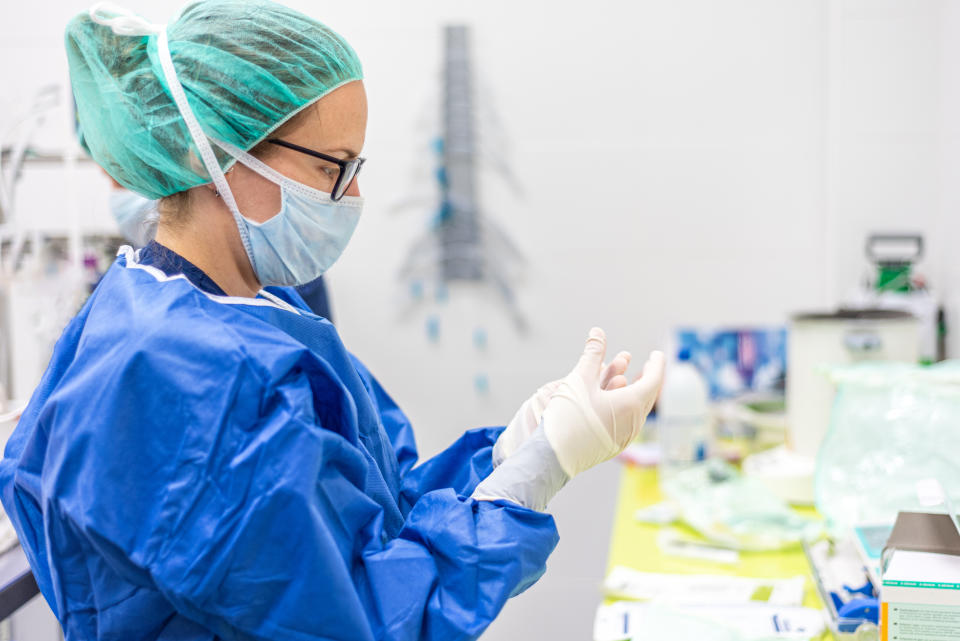Healthcare workers and their families accounted for one in six working-age COVID hospital patients in first wave, study suggests

Healthcare workers and their families made up around a sixth of coronavirus patients in hospital during the infection’s first wave, research suggests.
Early in the outbreak, concerns were raised front-line workers in hospitals and care homes may be more exposed to the coronavirus, particularly if they have insufficient personal protective equipment (PPE).
To better understand the risk, scientists from the University of Glasgow analysed more than 158,000 healthcare staff and 229,000 members of the employees’ households.
Results revealed that during the height of Scotland’s outbreak – defined as 1 March to 6 June – healthcare workers and their families made up a sixth (17%) of the hospitalised coronavirus patients of a working age.
The risk was highest among “front door” staff, like paramedics and A&E workers.

Since the coronavirus emerged at the end of 2019, reports have flagged healthcare staff as being at greater risk of catching the infection and spreading it within their household.
Feeling high-quality studies into the extent of this risk were lacking, the Glasgow scientists analysed the infection rate among healthcare workers aged 18 to 65 and other members of their household.
They then compared the rate of infection against that of the general public.
Results, published in the BMJ, suggest the participants’ overall risk of admission to hospital with COVID-19 – the disease caused by the coronavirus – was low, at 0.5%.
Compared with other working age adults, however, healthcare workers and their households made up 17% of all COVID-related hospital admissions.
This is despite them representing just 11% of the working age population.
Watch: Can you catch coronavirus twice?
After adjusting for factors that are known to raise the risk of coronavirus complications – like old age, being male and having underlying health conditions – the risk of hospital admission for healthcare workers in non-patient facing roles was similar to that for the general population.
Patient-facing workers, however, were over three times more likely to be admitted to hospital with COVID-19, while the risk nearly doubled among members of their household.
Among the healthcare workers who were admitted, one in eight went into critical care and six (2.5%) died.
One in five of the admitted household members went into critical care and 18 (13%) died.
The scientists stressed the participants were largely white, with the results potentially not applying to other ethnicities.
Statistics have repeatedly shown people of non-white ethnicities are more likely to develop coronavirus complications and die.
The scientists are calling on global governments, healthcare managers and occupational health specialists to consider how best to protect workers and their families as the pandemic continues to unfold.
In a linked editorial, researchers from Skane University Hospital in Sweden stressed if and when an effective vaccine becomes available, the jab “must be distributed fairly and healthcare workers must be prioritised globally”.
“We must ensure the protection and security of all health workers in all settings,” they added.
Watch: What is long COVID?




